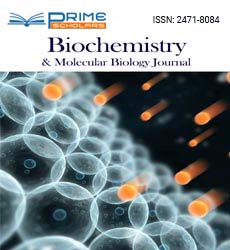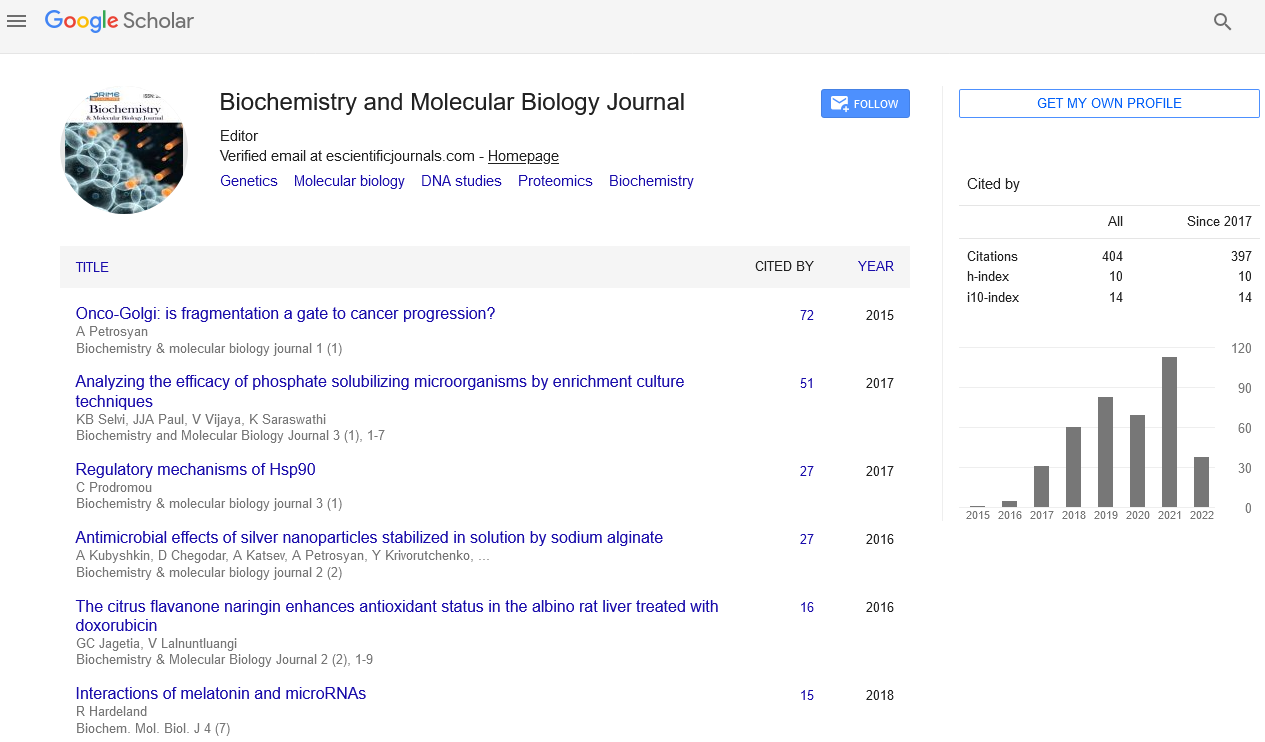Alekhya Thirunahari*
Department of Biotechnology, Osmania University, Hyderabad, Telangana, India
- *Corresponding Author:
- Alekhya Thirunahari
Department of Biotechnology,
Osmania University
Hyderabad, Telangana, India
Tel: 551832291000
E-mail: thirunaharialekhya151315@gmail.com
Received Date: June 05, 2021; Accepted Date: June 10, 2021; Published Date: June 15, 2021
Citation: Thirunahari A (2021) Development of New Drugs and Molecular Targets for Aspergillus fumigatus. Biochem Mol Biol Vol. 7, No. 6: 27.
Editorial
Aspergillus fumigatus is an opportunistic and saprophytic fungus
that can induce a variety of clinical diseases, the most serious of
which is invasive lung aspergillosis. Under certain conditions, all
living species' cells are programmed to self-destruct. The most
well-known kind of planned cell death is apoptosis.
Its presence has been established in several fungi and linked
to critical biological processes as development, ageing, stress
responses, and pathogenicity. In A. fumigatus, the apoptosis
mechanism is still poorly characterised. In order to battle the
fungus Aspergillus fumigatus, new research opportunities have
evolved. Natural products and medicinal plants play a significant
role in the creation of new medications used in human treatment
in this regard. Apoptosis has emerged as a crucial regulator of
fungal growth, indicating that pathway intermediates could be
viable therapeutic targets. Natural products are also interesting
sources for the identification of novel medicinal medicines.
Currently, Aspergillus fumigatus is the most common fungal
pathogen found in the air. In humans, it can cause a variety of
diseases, including the most severe and invasive aspergillosis. The
high death rate of this disease necessitates a concentrated effort
to uncover the fundamental principles behind its pathogenicity.
The fungus's strong capacity for drug resistance, as well as its
restricted drug synthesis, has been an issue. This highlights the
necessity for the development of new effective medications to be
utilised as antifungal therapies.
As a result, it's critical to investigate genes involved in essential
signalling pathways, as these could be used as targets for the
development of new antifungal medications. Several signalling
pathways may play a role in the infectious process of A.
fumigatus. Apoptosis, or programmed cell death, is responsible
for preserving the body's balance and can be triggered by a
variety of factors.
The apoptotic process in A. fumigatus, on the other hand, is linked
to a complicated signalling network and a slew of unidentified
proteins [3]. The study and comprehension of A. fumigatus's
apoptotic process may aid in identifying and interfering with the
fungus's specific targets.
Drug development for the control of harmful fungus has received little attention. As a result, new treatment approaches to treating
this disease are urgently needed. Drug development for the
control of harmful fungus has received little attention. As a result,
new treatment approaches to treating this disease are urgently
needed. Furthermore, pharmacological research of medicinal
plant active components has resulted in significant breakthroughs
in the treatment of a variety of ailments, with various compounds
present in plants serving as useful targets for pharmacological,
physiological, and biochemical studies.
Brazil has the most diversified plant genetic diversity in the world
Furthermore, given Brazil's rich flora, there is still an untapped
natural source of plant secondary metabolites with a variety of
chemical and medicinal properties that has yet to be discovered.
Our research group is located in the Brazilian Cerrado, South
America's second biggest biome, which is particularly conducive
to the study of active ingredients from medicinal plants that can be
utilised as prototypes for the development of novel medications.
Given the difficulties of identification and the ineffectiveness of
current antifungals, which both contribute to the high mortality
rate caused by invasive aspergillosis, novel treatment targets that
are effective and specific to this fungus are urgently needed. As a
result, natural mechanisms in this microbe could be the subject
of future research. Natural products are a prospective source of
new pharmaceutical medications, hence investigations targeted
at discovering new bioactive chemicals from plants are crucial.

